laglaw only takes on 0 or 1. My categorical variables suffixed with TRUE were created using the syntax YX$jan <- seatbelt$month[t]==1 and if I call them with YX$jan they return a dataframe of TRUE or FALSE. Are these being treated differently than my laglaw categorical variable containing 0's and 1's?
If laglaw is not being treated as a categorical variable
1)what information does it provide in this form that's different from if it were categorical?
2)how can I make it categorical?
